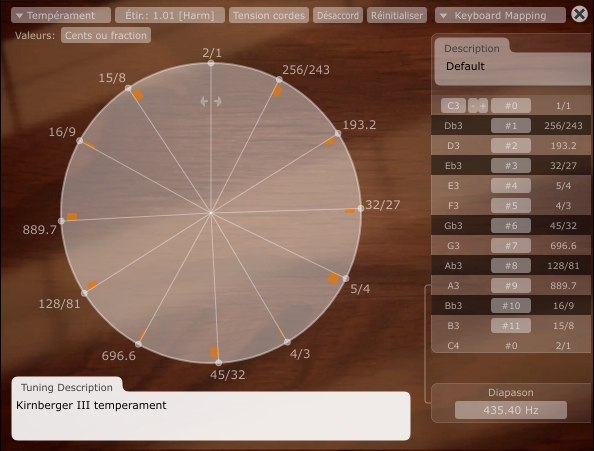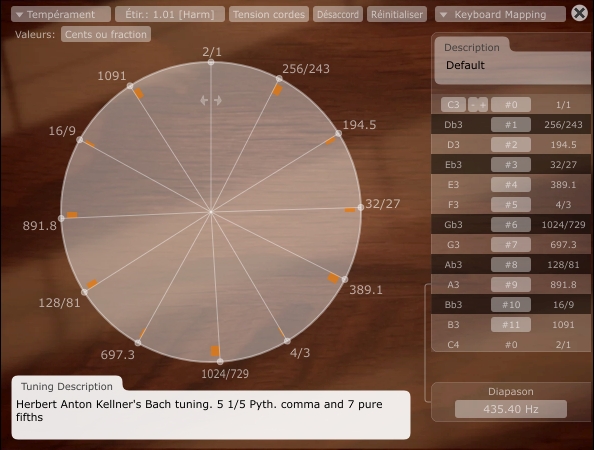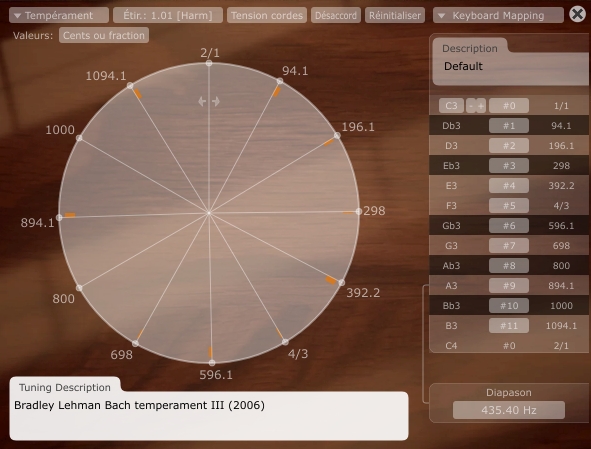Topic: Research that Pianoteq users can help with
I tune pianos and have been listening to the effects of tuning harmonics for years.
Pianoteq is the most magic facility that modern technology has enabled and is particularly valuable in its abilities for research of piano tone.
It's possible to repeat this experiment on the 1885 Bechstein similar to the Pianoteq 1899 simulation
https://www.youtube.com/watch?v=Pz0B0SwKpww
now on all of the instruments ancient and modern and in different temperaments.
I'm interested in the perfect fifth based series of temperaments Well Temperament, Kellner and Kirnberger III using 7 perfect fifths and 5 tempered ones, possibly Werkmeister III also and 1/6 comma meantone.
It's really instructive to go in the same way to the F below Tenor C and play Eb F G and A above Treble C being near 7th 8th 9th and 10th harmonics.
In equal temperament on the Steinway D, Bechstein DG and in particular the Kawai K2 you'll hear the D, 9th Harmonic really ringing out. When you change to other temperaments such as Kellner and Kirnberger III the 9th Harmonic doesn't sound so much or at all and is overtaken by the 8th and 10th Harmonics. In this way the metallic sound of the Kawai in particular is alleviated and the Steinway and Bechstein sound better too.
What do other people hear? On other notes too?
Do the unequal temperaments improve and make more musical the sound of the modern instrument?
Blondel, head of Erard, in 1927 recommended a temperament using 7 perfect fifths and 5 tempered fifths identifying the effect as "harmonious and possessed of a charm which makes plain the natural qualities of the instrument"
The other day I tuned a Steinway A and my friends teased me "Congratulations! You've ruined a Steinway" with smiles on their faces - "It sounds like a Pleyel".
Would other instruments made now be improved if tuned as Erards recommended in 1927?
My French isn't good enough to follow the specific tuning instructions on https://gallica.bnf.fr/ark:/12148/bpt6k123724v.pdf page 678. On a preliminary reading I see it as it as EA tempered, BE pure, BF# tempered, GbDb pure, DbAb tempered, AbEb pure, EbBb pure, BbF tempered, CF pure, CG tempered, GD pure, DA pure but in haste can easily have got the wrong end of the stick and haven't quite been able to work out the details of the checks. It would be of interest and great assistance if anyone could possibly do the tuning and publish the cent deviations for others to try.
There's an interesting question. Kirnberger wasn't at liberty to disclose Bach's secret formula https://stereosociety.com/wp-content/up...screen.pdf but could disseminate something similar. Kellner temperament might well be Bach's as it's a toned down version of Kirnberger and possibly more likely to have given smoother results for Bach. Now if Erard were supplying concert instruments and tuning them for top prestige events would Blondel on their behalf disclose what might be their secret formula? So the Erard temperament published there might be like what Erard used themselves but not exact but still uses the 7 perfect fifths and 5 tempered ones. So people experimenting with "Erard" temperament in the repertoire might well find interesting things.
Published in 1927 we see composers such as Debussy, Fauré and Ravel squarely in the realm of unequal temperament.
When you've heard the metallic harmonics come through in Equal Temperament and become irrelevant in the "Well Temperament" perhaps others might start to consider the modern instrument as tuned now to be in tune with its inharmonics more like the concept of the gamalan rather than the instrument that can be tuned as Blondel indicated, harmonious with charm and doing justice to the music.
The results of experiments will be very helpful in deeper demonstration on the tuning seminar event on 6th May.
Best wishes
David P


